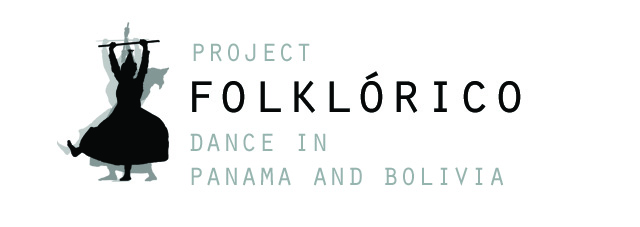
Folklórico in Panama
The folkloric dances of the Republic of Panama are diverse with European, African, and indigenous influences including those from the most southern part of the country in the province of Darien to the San Blas Islands. In terms of movement analysis, the European influence, which comes principally from Spain, is evident in the vertical carriage of the torso and social dance positions whereby the male dancer escorts the female. Indigenous influences are present in the use of repetition and fluidity in changing formations, and African influences are evident in the use of a lowered center of gravity and body isolations, particularly the hips. The themes of the national dances are derived principally from courtship, nature, and patrimony. Each province may be differentiated by its own interpretation of a particular dance as well as unique approaches to costuming, dance technique, and execution of patterns and formations.
The presence of the diablo or devil is a repeated theme within Panamanian folkloric dance, and there are numerous variations including diablos sucios or dirty devils and grandiablos or grand devils. Less visible are the diablos de espejo, devils of the mirrors, which dance each year in the village of Escobal for the celebration of Corpus Christi. A small group of diablos de espejo also traveled to the Festival of the Mejorana in Guararé as witnessed in September of 2013. In addition, the tradition of the Congo Ritual features diablos which emerge onto the streets of cities, towns, and villages on the east coast of Panama. The researcher’s field work drew her to the devils of the Congo Ritual as well as the diablos de espejo as they represent Afro-Panamanian traditions and, at the time of her residence and subsequent research trips to Panama remained less visible and understood in comparison with Spanish-influenced traditions.


